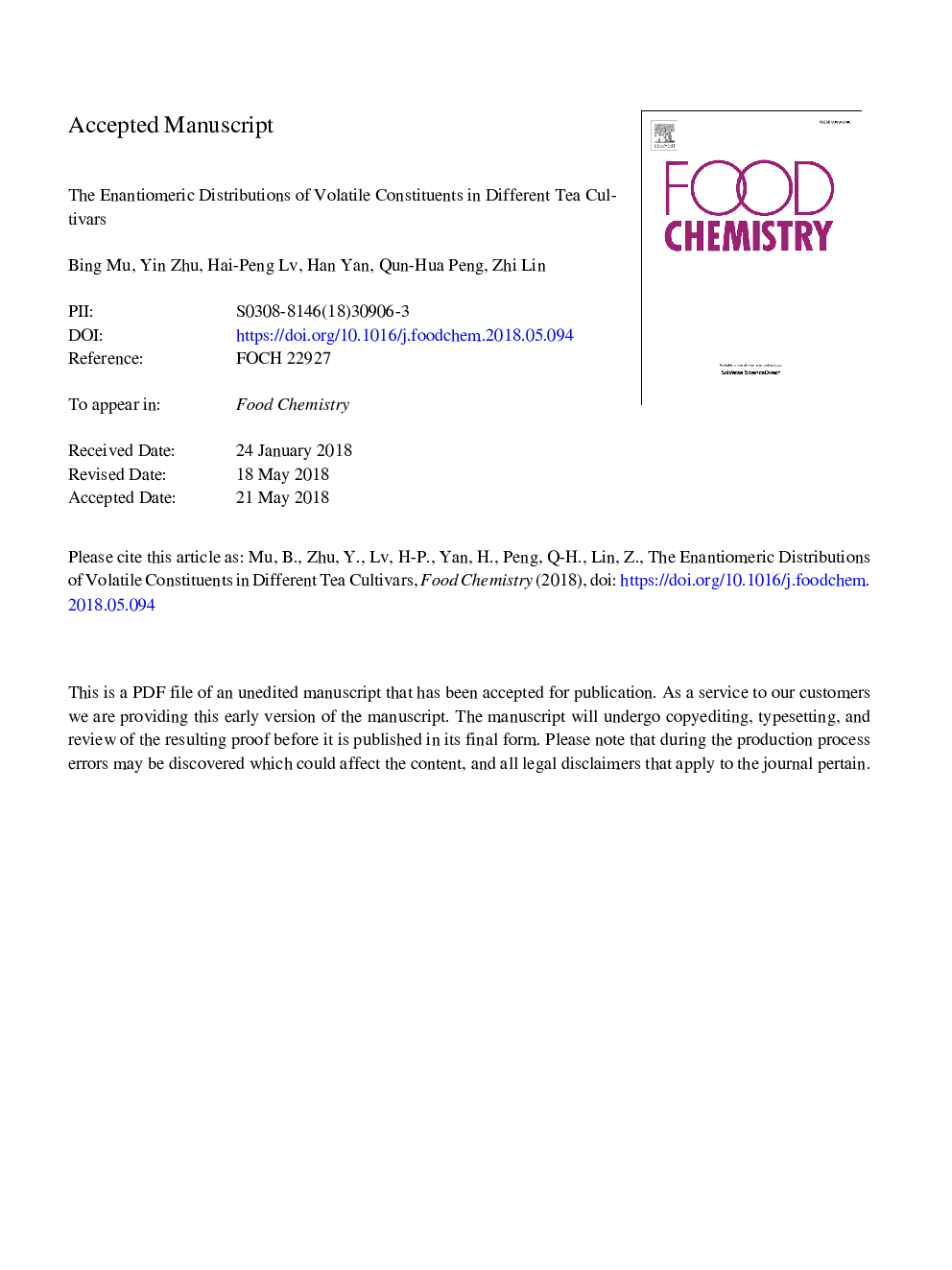| Article ID | Journal | Published Year | Pages | File Type |
|---|---|---|---|---|
| 7584713 | Food Chemistry | 2018 | 33 Pages |
Abstract
Although the enantiomeric distribution of chiral volatiles presents great potential in discrimination of tea cultivars and their geographic origins, this area has received little attention. Thus, we herein aimed to determine the relationships between tea cultivars and the enantiomeric distributions of their chiral volatile constituents. Headspace solid-phase microextraction (HS-SPME) and enantioselective gas chromatography-mass spectrometry (Es-GC-MS) were employed to quantify 15 volatile components in 22 tea cultivars from different locations within China. The tea cultivars were successfully differentiated by their geographical origins, and the concentrations of R-linalool, S-citronellol, S-E-nerolidol, (1R, 2R)-methyl jasmonate, S-α-ionone, and the two enantiomers of linalool oxide A differed significantly among the different groups. It should also be noted that tea processing methods greatly influenced the formation of volatile enantiomers. Our results demonstrated that the enantiomeric distribution of volatile constituents closely correlates with the geographical origins, leaf types, and manufacturing suitabilities of the tea cultivars examined herein.
Keywords
Related Topics
Physical Sciences and Engineering
Chemistry
Analytical Chemistry
Authors
Bing Mu, Yin Zhu, Hai-Peng Lv, Han Yan, Qun-Hua Peng, Zhi Lin,
